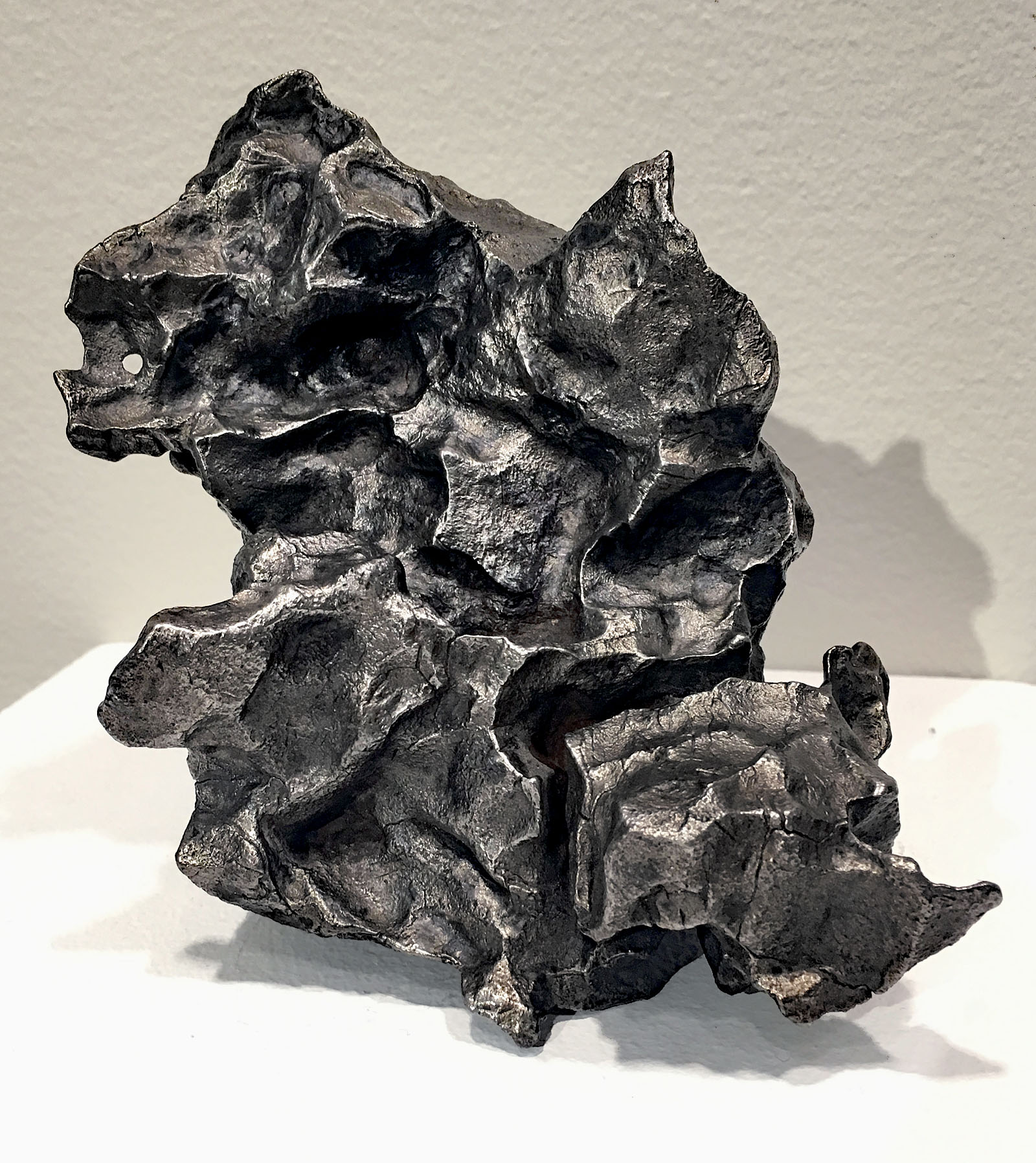|
Roll Overs:
#1
#2
|

|
4.26 kg. 88 x 163 x 119mm. Iron, IIAB
TKW 23 MT. Observed fall February 12, 1947.
   
Darryl writes:
The following Sikhote Alin specimen is available in Christie’s Deep Impact Meteorite Auction which ends this Wednesday morning, February 14th, at 10:00a EST (GMT-5). Darryl took the following two images which provide a different — and arguably more appealing — perspective than when the meteorite is perched on a photo set illuminated by strobe.
This deceptively massive, asymmetric body is the quintessence of an iron meteorite. Deep furrows, vibrant peaks, and regmaglypts (the thumbprint-like indentations produced during the meteorite’s fiery plunge through the upper atmosphere) are much in evidence. Draped in a gunmetal patina, this sample also features a rarity: a natural hole in the upper right flange. The reverse features shallow regmaglypts along a largely flat surface, evidence of this meteorite having been ripped apart in the upper atmosphere along a crystalline plane and then continuing to undergo atmospheric frictional heating. The reverse has a finely stippled texture, a terrestrial artifact of this meteorite having rested in a marsh prior to recovery. This meteorite is testament to the monumental forces exerted on an object while punching through Earth’s atmosphere, and is a compellingly aesthetic example from the greatest meteorite shower in modern times.
Lot Essay:
This is a distinguished meteorite from the Sikhote-Alin event — the largest meteorite shower of the last several thousand years. Its journey began 320 million years ago, when a giant iron mass broke-off from its parent body in the asteroid belt and wandered through interplanetary space until it encountered Earth on 12 February 1947. When it slammed into the atmosphere it began to break apart, and then created a fireball brighter than the Sun as it sailed over the Sikhote-Alin Mountains in eastern Siberia. The shockwaves from the low altitude explosion of the main mass collapsed chimneys, shattered windows and uprooted trees. A 33 kilometer long smoke trail in the sky persisted for several hours, and many of the resulting meteorites produced impact craters as large as 26 meters—with nearly 200 craters having been catalogued. A famous painting of the event by artist and eye-witness P. I. Medvedev was reproduced as a postage stamp issued by the Soviet government in 1957 to commemorate the tenth anniversary of an event that observers likened to what was seemingly the end of the world. There are two types of Sikhote-Alin meteorites: jagged and twisted shrapnel-like specimens (the result of the aforementioned low-altitude explosion of the main mass (see lot 15), and the smooth, gently scalloped specimens that broke free at a much higher altitude and had an opportunity to ablate and form the aerodynamic thumb prints known as “regmaglypts”). The example now offered (as well as 11 and 13) are examples of the latter variety. This is a superior example of an historic event, the largest meteorite shower of the modern era.
Christie's would like to thank Dr. Alan E. Rubin at the Institute of Geophysics and Planetary Physics, University of California, Los Angeles for his assistance in preparing this catalog note. |
Click to view larger photos
#1
#2
|
Found at the arrow (green or red) on the map below
View Larger Map |
|
| |
Stephen Amara
2/12/2018 3:57:54 AM |
Beautiful, majestic Sikhote Akin. Undetected hidden perhaps in the asteroid belt, the planetary sniper grazed earth's shoulder with this massive beauty!!! |
Graham
2/12/2018 3:28:08 AM |
Beautiful photograph and specimen.
|
| |
|